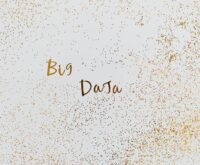The Unstoppable Momentum of AI: It’s Moving Faster Than You Think
It feels like just yesterday we were marveling at AI that could barely beat a human at checkers. Now, we’re having full-blown conversations with chatbots, generating photorealistic art from a sentence, and solving biological mysteries that have stumped scientists for half a century. The pace is, frankly, staggering. This isn’t just incremental progress; we’re witnessing a series of foundational deep learning breakthroughs that are fundamentally rewriting the rules of what’s possible. These aren’t just lab experiments anymore. They are powerful tools actively reshaping industries and our daily lives, and it’s all happening right now.
If you’ve felt a bit of whiplash trying to keep up, you’re not alone. One minute, everyone’s talking about one model, and the next, another one drops that makes the previous one look like a toy. So, let’s cut through the noise. We’re going to break down the most significant leaps forward in recent memory, explain them in plain English, and explore what they actually mean for you, me, and the future we’re building together.
Key Takeaways
- Transformer Architecture: The invention of the “attention mechanism” in Transformers completely revolutionized how machines understand language, paving the way for models like GPT-4.
- Generative AI’s Creative Leap: Diffusion models have become the state-of-the-art for generating stunningly realistic images from text, surpassing earlier technologies like GANs.
- Solving Scientific Grand Challenges: DeepMind’s AlphaFold solved the 50-year-old protein folding problem, a monumental achievement with massive implications for medicine and drug discovery.
- The Rise of Multimodality: The latest AI models aren’t limited to one type of data. They can understand and process text, images, audio, and video simultaneously, creating a more holistic understanding of the world.
The Transformer Tsunami: How AI Learned to Pay Attention
For a long time, the biggest hurdle for AI in understanding language was context. Older models, like Recurrent Neural Networks (RNNs), processed text sequentially, word by word. This created a bottleneck. By the time the model got to the end of a long paragraph, it had often forgotten the crucial details from the beginning. Think of it like trying to remember the first chapter of a book while you’re reading the last. It’s tough.
Then, in 2017, a paper from Google researchers titled “Attention Is All You Need” changed everything. It introduced the Transformer architecture. This wasn’t just another small step; it was a giant leap.
What is this ‘Attention Mechanism’ Anyway?
The secret sauce of the Transformer is the self-attention mechanism. Instead of processing words one by one, it looks at the entire sentence (or even the entire document) all at once. It then figures out which words are most important to which other words. It learns the relationships, the nuances, and the context. For example, in the sentence, “The robot picked up the heavy metal ball because it was magnetic,” the attention mechanism can correctly determine that “it” refers to the “ball,” not the “robot.” This sounds simple, but for a machine, it’s an incredibly complex feat that was previously a massive struggle. This ability to weigh the importance of different words in relation to each other is what gives models like ChatGPT their uncanny ability to maintain coherent, context-aware conversations.

From Text to Everything: The Transformer’s Dominion
While born from natural language processing (NLP), the Transformer’s influence didn’t stop there. Researchers quickly realized that this powerful architecture could be applied to other data types. We now have Vision Transformers (ViTs) that can analyze images with the same contextual understanding, leading to breakthroughs in object recognition and image classification. They’re being used in genomics to understand DNA sequences and even in reinforcement learning to train smarter game-playing agents. The Transformer wasn’t just a new model; it was a new-found-land, a foundational building block for a whole new generation of AI.
Generative AI’s Creative Explosion: Diffusion Takes the Crown
If you’ve been on the internet in the past couple of years, you’ve seen the work of generative AI. Fantastical images of “an astronaut riding a horse on Mars in the style of Van Gogh” or hyper-realistic portraits of people who don’t exist. For a while, the technology behind this was dominated by GANs (Generative Adversarial Networks), which involved two neural networks—a generator and a discriminator—competing against each other to produce realistic outputs. GANs were clever, but often unstable and difficult to train.
Enter diffusion models. This is one of the most exciting recent deep learning breakthroughs, and it’s the engine behind powerhouses like DALL-E 3, Midjourney, and Stable Diffusion.
How Diffusion Creates Masterpieces from Noise
The process is both beautifully simple and mind-bogglingly complex. Imagine you have a clear photograph.
- The Forward Process: The model starts by slowly, step-by-step, adding a tiny amount of random noise (like TV static) to the image until it becomes completely unrecognizable noise. It does this thousands of times, learning the process of destruction at each step.
- The Reverse Process: This is where the magic happens. The model then learns to reverse this process. Starting with pure random noise, it meticulously removes the noise, step-by-step, guided by a text prompt you provide. It’s like a sculptor starting with a block of marble and chipping away until a statue emerges. But in this case, the AI is a master sculptor who can create literally anything you can describe.
This method has proven to be far more stable and capable of producing higher-fidelity, more diverse images than its predecessors. It’s a fundamental shift in how we think about machine creativity.
Solving Biology’s Grand Challenge: The AlphaFold Revolution
Not all deep learning breakthroughs are about language or art. Some are about decoding the very building blocks of life itself. For 50 years, one of the grand challenges in biology was the “protein folding problem.”
Why Protein Folding is Such a Big Deal
Proteins are the workhorses of our bodies. They’re long chains of amino acids, and the way this chain folds into a unique 3D shape determines its function. A slight misfold can lead to devastating diseases like Alzheimer’s or Parkinson’s. The problem is, there are more possible ways for a protein to fold than there are atoms in the universe. Predicting this final 3D structure from its amino acid sequence was a task that stumped the brightest human minds and most powerful supercomputers for decades. Until DeepMind came along.

DeepMind’s AI, AlphaFold, essentially solved this problem. Using a deep learning architecture that incorporated principles of attention and spatial relationships, it can now predict a protein’s 3D structure with astounding, near-experimental accuracy. The implications are almost impossible to overstate. DeepMind has made its database of over 200 million protein structures freely available to scientists everywhere. This is supercharging research in:
- Drug Discovery: Scientists can now design drugs that target specific proteins with much greater precision.
- Disease Understanding: We can better understand how genetic mutations lead to misfolded proteins and diseases.
- Sustainability: Researchers are using it to design enzymes that can break down industrial waste or single-use plastics.
AlphaFold is a landmark achievement, a perfect example of AI being used not just to mimic human intelligence, but to solve problems that were previously beyond our reach.
The Next Frontier is Multimodal: AI That Sees and Hears
Humans experience the world through a combination of senses. We read text, see images, hear sounds, and watch videos, and our brain seamlessly integrates all this information. For a long time, AI models were specialists. One was good at text, another was good at images. This is changing fast.
The latest breakthrough is multimodal AI. These are models trained on vast datasets containing text, images, and other data types all linked together. The result is an AI that has a much richer, more contextual understanding of concepts. When you show a model like GPT-4 with Vision (GPT-4V) a picture of a birthday party, it doesn’t just see pixels. It recognizes the people, the cake, the balloons, and understands the *concept* and *feeling* of a celebration. You can ask it, “What’s a good gift idea for the person in the center?” and it can use visual cues to give a relevant answer.
This integration of different data streams is the next logical step toward more general and capable AI. It allows for entirely new applications:
- AI that can describe a complex visual chart for someone with a visual impairment.
- Systems that can watch a video of a machine and diagnose a problem based on both the sight and sound of the engine.
- Educational tools that can generate a lesson plan based on a diagram you’ve sketched on a whiteboard.
Conclusion
The journey from the theoretical underpinnings of neural networks to the powerful, world-altering tools we have today has been nothing short of extraordinary. The deep learning breakthroughs we’ve discussed—Transformers, Diffusion Models, AlphaFold, and Multimodal AI—are not isolated incidents. They are interconnected milestones on a trajectory of exponential progress. They represent a fundamental shift in our ability to process information, generate creativity, and solve scientific puzzles. We’ve moved beyond simple pattern recognition into an era of generation, understanding, and discovery. The future isn’t just coming; it’s being built, one neural connection at a time, and the next breakthrough is probably just around the corner.
FAQ
What’s the difference between AI, Machine Learning, and Deep Learning?
Think of them as nested dolls. Artificial Intelligence (AI) is the broadest concept of machines being able to carry out tasks in a way that we would consider “smart.” Machine Learning (ML) is a subset of AI; it’s the approach where we give computers access to data and let them learn for themselves without being explicitly programmed. Deep Learning (DL) is a subset of ML that uses complex, multi-layered neural networks (like the ones discussed in this article) to solve even more complex problems. All the breakthroughs here are in the field of deep learning.
Are these AI models going to take our jobs?
This is a major concern, and the honest answer is complex. Some jobs, particularly those involving repetitive data processing or content creation, will certainly be transformed or automated. However, history shows that technology also creates new jobs and roles that we can’t yet imagine. The key will be to see these models as powerful tools—or co-pilots—that can augment human capabilities, not just replace them. They can handle the tedious work, freeing up humans to focus on high-level strategy, creativity, and empathy, which are still uniquely human strengths.
How can I start learning about deep learning?
It’s more accessible than ever! There are fantastic free and paid resources online. For beginners, platforms like Coursera and edX have introductory courses from top universities (Andrew Ng’s Machine Learning course is a classic). For those who prefer hands-on learning, resources like fast.ai offer a practical, code-first approach. Finally, reading blogs, watching YouTube tutorials (like those from 3Blue1Brown), and experimenting with open-source models on platforms like Hugging Face are amazing ways to dive in and get your hands dirty.



 Deep Learning Breakthroughs: The AI Revolution Explained
Deep Learning Breakthroughs: The AI Revolution Explained  How AI is Revolutionizing Modern Agriculture
How AI is Revolutionizing Modern Agriculture  Top Natural Language Processing Applications Explained
Top Natural Language Processing Applications Explained  How AI for E-commerce is Changing Online Retail in 2024
How AI for E-commerce is Changing Online Retail in 2024  Understanding Neural Networks: A Simple Guide for 2024
Understanding Neural Networks: A Simple Guide for 2024  Top AI Tools for Freelancers to Boost Your Business (2024)
Top AI Tools for Freelancers to Boost Your Business (2024)  Sentiment Analysis for Crypto: A Trader’s Ultimate Guide
Sentiment Analysis for Crypto: A Trader’s Ultimate Guide  NFTs: The New Key to Membership & Brand Loyalty | Guide
NFTs: The New Key to Membership & Brand Loyalty | Guide  Polkadot’s Parachain Architecture Explained Simply
Polkadot’s Parachain Architecture Explained Simply  Crypto Phishing: How to Protect Your Digital Assets
Crypto Phishing: How to Protect Your Digital Assets  Social Media on Blockchain: The Next Digital Frontier
Social Media on Blockchain: The Next Digital Frontier  What is a Flash Loan? A DeFi Deep Dive for Beginners
What is a Flash Loan? A DeFi Deep Dive for Beginners